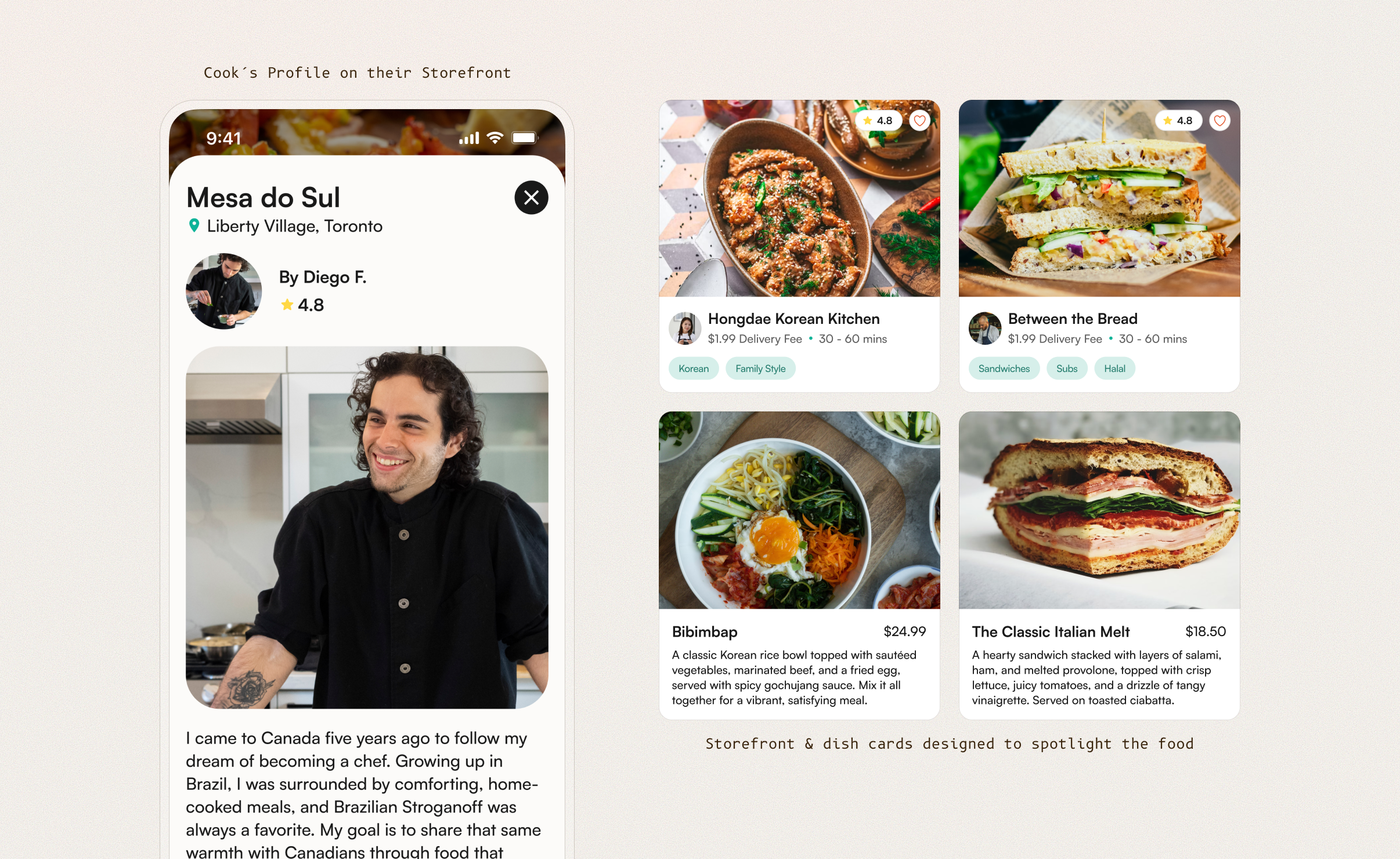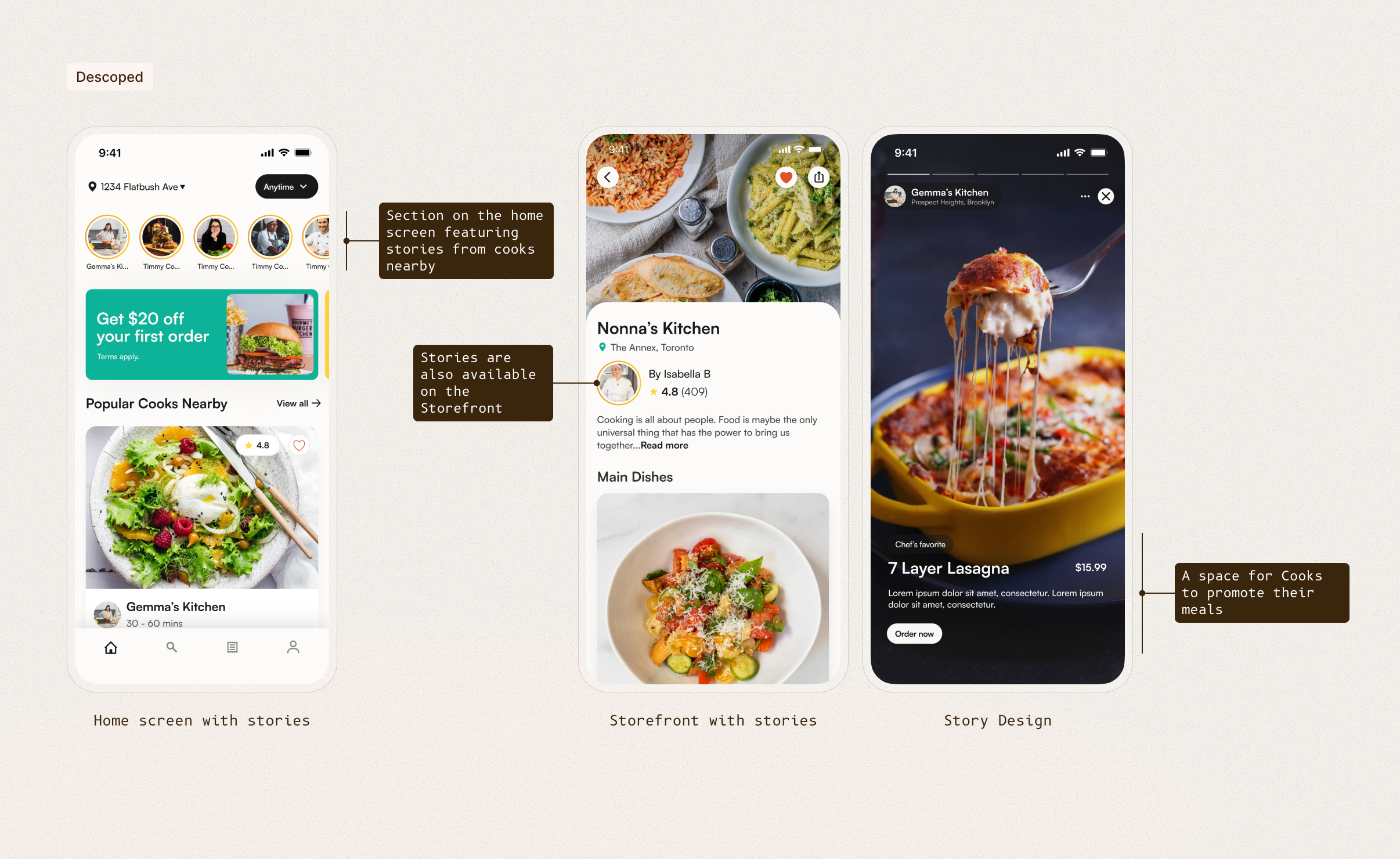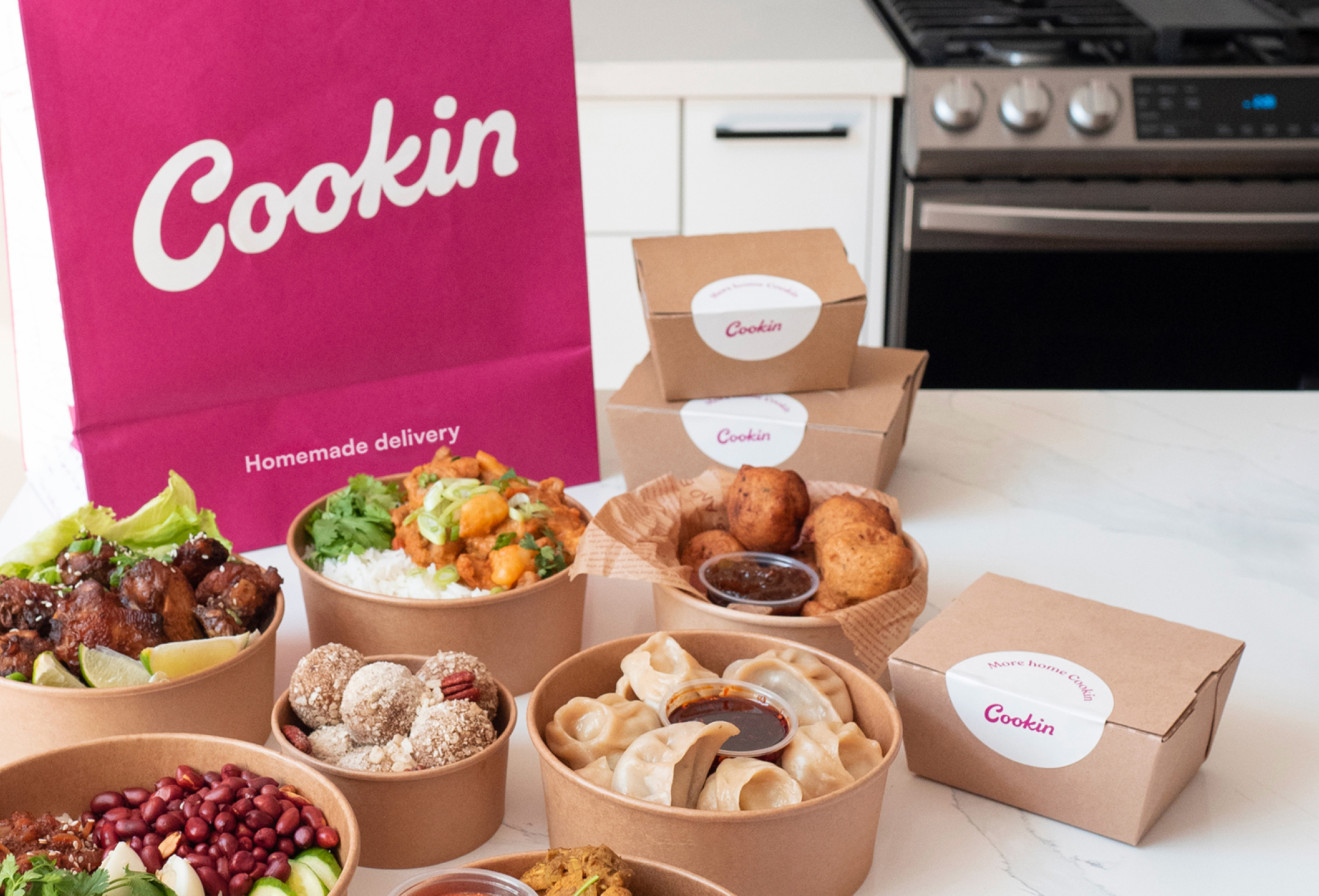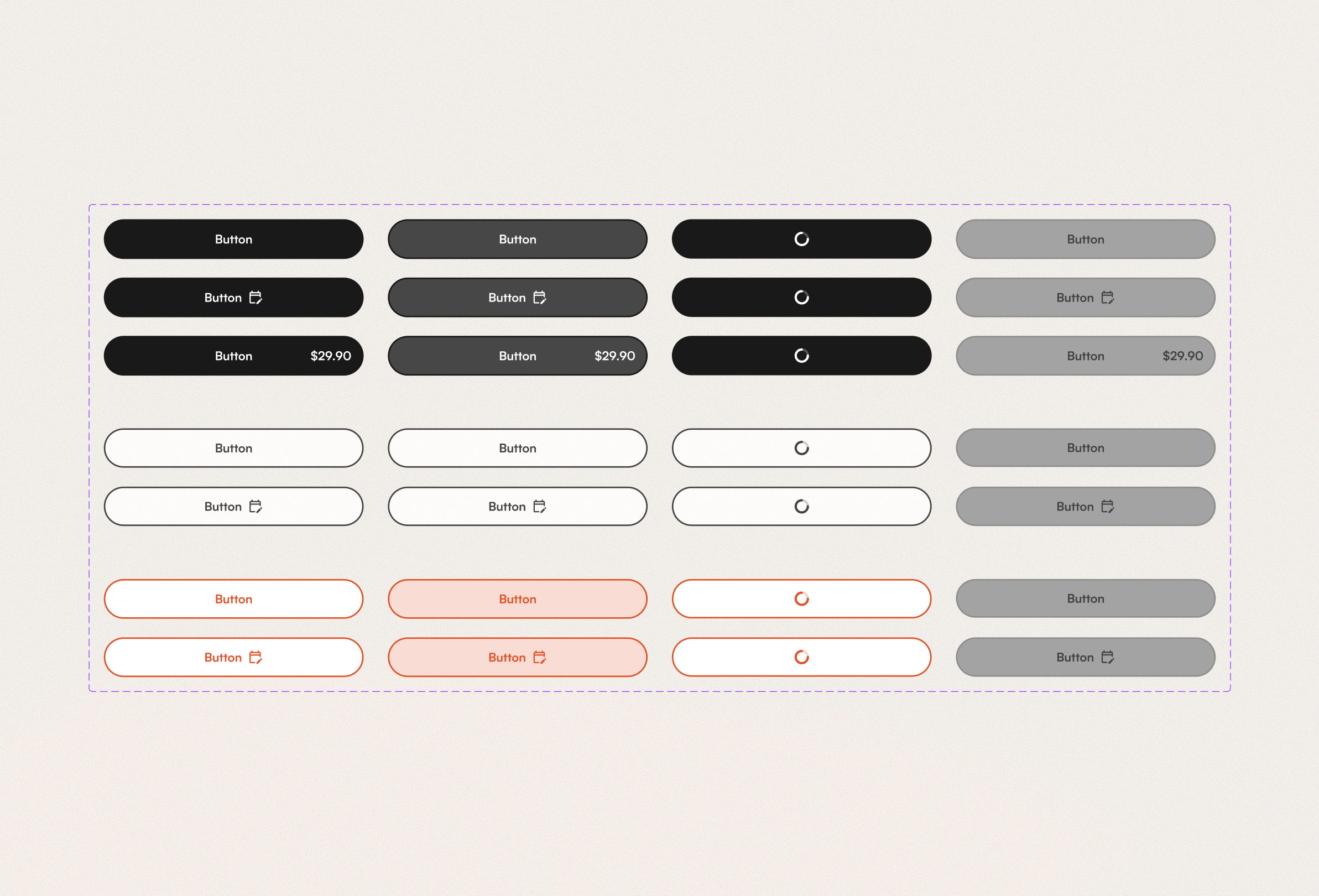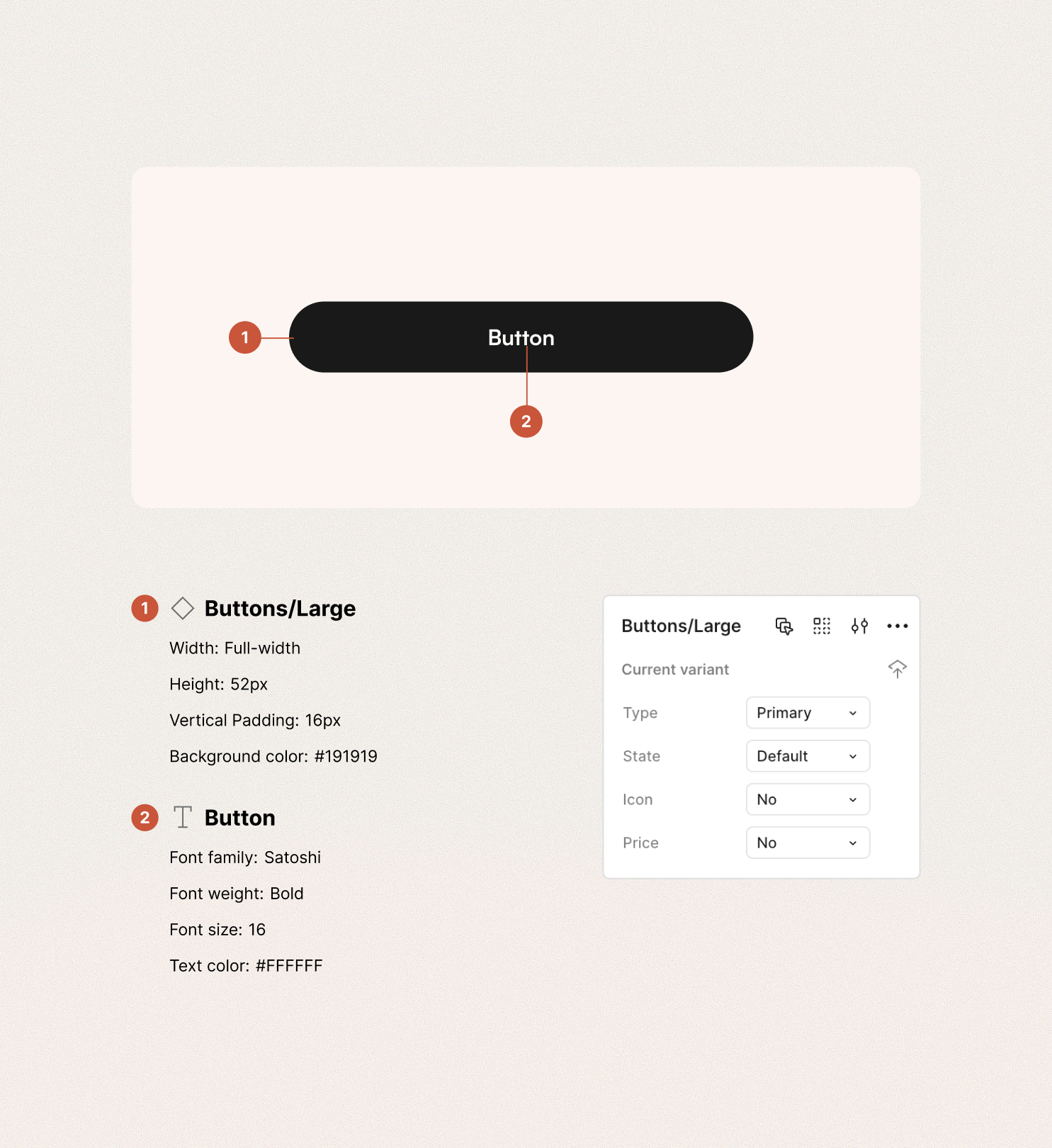Crafting an experience that helped 1,000+ home cooks thrive
6 Engineers
 Opportunity
Opportunity
Traditional food delivery apps were built for restaurants, not home kitchens. But a shift was happening. Consumers were craving something more personal: meals with a story, made with care.
As platforms like Shef began gaining traction, Cookin saw an early opportunity to lead this movement by empowering home cooks and connecting communities through food rooted in culture, heritage, and trust.
 My Role
My Role
I co-led product design for Cookin, shaping the experience across mobile, web, and marketing touchpoints. This included co-designing two separate apps: one for home cooks and one for customers, supporting both sides of the marketplace.
I helped translate user insights into product flows, contributed to key product strategy decisions, and collaborated closely with developers through QA to ensure design quality from concept to launch.
 Impact
Impact
Understanding the needs of Home Cooks
Before diving into design, we spoke with home cooks in Toronto and New York to better understand their needs and aspirations. These were passionate, self-taught chefs cooking for their families, communities, and the joy of sharing food. Their feedback surfaced practical challenges and expectations that directly shaped our product direction.
Need for flexible schedules
“My availability changes week to week. I need to control my hours.”
Menus that change day to day
“Some days I cook with whatever I have. I can’t promise the same menu every day.”
Sharing their story builds trust
“This food is part of who I am. I want people to know where it comes from.”
Concerns about handling delivery
“I love cooking, but I have no idea how I’d manage packaging and drop-offs.”
Understanding what Customers value
To understand customer expectations, we used secondary research. This helped us identify common pain points and user priorities, which we used to shape the customer-facing side of Cookin.
Reliable delivery builds trust
Delays, cancellations, or unclear timing are major turnoffs.
Clear pricing matters
Transparent costs reduce cart abandonment and increase confidence.
Food safety builds trust
Photos, reviews, and food safety info drive purchase decisions.
Personal stories create connection
Customers are more drawn to cooks who share their background and culture.
Defining the journey
We ran a cross-functional workshop with product, design, and the founders to map the full journey from awareness to fulfillment for both cooks and customers. During the same session, we used a Jobs to Be Done framework to unpack the motivation behind each step.
This helped us identify the most critical functionalities early and shaped how design and product collaborated to define user stories, prioritize features, and structure the app’s information architecture.
Designing around real needs
The insights and strategy we uncovered were embedded directly into the user flows we designed. Each feature was built to reflect real needs and guided by the core questions we defined earlier.
Easy order management
For many home cooks, this was their first time managing orders and preparing meals for delivery. To support them, I designed an order management flow that used progressive disclosure to reduce overwhelm and build confidence.
Each stage (incoming, in progress, ready for delivery, and scheduled) displayed only the most essential information. This helped cooks stay focused, avoid mistakes, and feel guided throughout the entire delivery process.
Flexible menu management
Home cooks needed the freedom to adapt their menus based on what they had on hand or how much time they had to cook. I designed a menu management flow that made it easy to adjust offerings day by day. Cooks could quickly add new meals or pull from a saved list of past dishes, giving them control without extra effort.
Bringing cooks' stories to the forefront
Many cooks wanted customers to understand the story behind their food. To support that, I designed extended profiles and structured storefront and dish cards to highlight photography and personal details. This approach helped build trust and connection.
I also explored a Stories-style feature for sharing updates, though it was postponed due to timeline constraints.
Rethinking availability and pre-orders
Late in the project, we began exploring how to handle pre-ordering. Initially, we looked at patterns from platforms like Uber Eats, where pre-orders are only allowed during open hours.
Through conversations with the founders, product, design, and engineering, we saw an opportunity to approach it differently. Letting customers pre-order even when a cook was closed could improve visibility for part-time cooks and create an additional revenue stream. I quickly designed and presented two directions that reflected this shift.
Food safety and cook vetting
To help customers feel confident when ordering, we included clear information about food safety protocols and how cooks are vetted. This transparency built trust with both individual cooks and the Cookin brand, reinforcing that home-cooked meals could still meet high standards for safety and quality.
Rapid usability testing for pre-orders
With limited time at the end of the project, we couldn't run full-scale usability testing. However, because pre-ordering was a relatively new pattern for this context, I wanted to validate which direction felt clearer to users.
We ran a quick friends-and-family test where participants were shown either Option 1 or Option 2. Option 2 resonated more, with users describing it as more straightforward and easier to understand.
One useful suggestion was to clarify availability earlier in the flow. Based on that feedback, I added a badge at the top of the storefront to let users know when a cook was only available for pre-order.
Supporting cooks beyond the app
User interviews revealed that delivery and packaging were major stress points for home cooks. Many felt overwhelmed by the logistics involved. This led us to think beyond the app and consider the end-to-end service experience. We recommended that Cookin manage delivery and provide branded packaging to reduce friction for cooks.
By addressing these offline pain points, we helped create a more supportive ecosystem. Cooks could focus on their food, and customers received a consistent and trustworthy experience.
Working closely across design and engineering
To support a growing product ecosystem, I helped build a design system that ensured visual consistency and made handoff between design and development more efficient.
I also stayed closely aligned with engineering throughout the build process. I reviewed components, refined front-end details, and resolved anything that didn’t translate well from Figma to code. This hands-on approach reduced friction and helped the team ship with confidence.
Helping Cookin grow and earn trust
Early traction and product-market fit
Since launch, Cookin has grown quickly across North America, onboarding over 1,000 home cooks in 50 cities across 26 U.S. states and 9 Canadian provinces. With more than 2,000 chef applications in the pipeline, demand continues to rise.
This early traction, combined with a 4.8+ average app rating, helped validate product-market fit and build investor confidence in the platform.
Creating an experience cooks want to stay with
By addressing challenges like scheduling and delivery, we created a platform that felt easy to manage. Cooks described it as autonomous, with reliable tools for payments, delivery, and marketing.
This sense of support helped boost participation, strengthen retention, and build long-term trust with both cooks and customers.
The Macro Chef, Ali D
“Thanks to the Cookin Platform, I was able to easily create a professional online store where I direct customers to place their orders..”
@saucy_chef_burgerskitchen
“I’ve been in business for a long time, but these last two months with this app are the most successfulI’ve been with my orders. ”
Streamlining handoff and execution
The design system helped ensure consistency and made handoff more efficient. Close collaboration with engineering reduced bugs, minimized rework, and allowed Cookin to launch faster with fewer delays.






